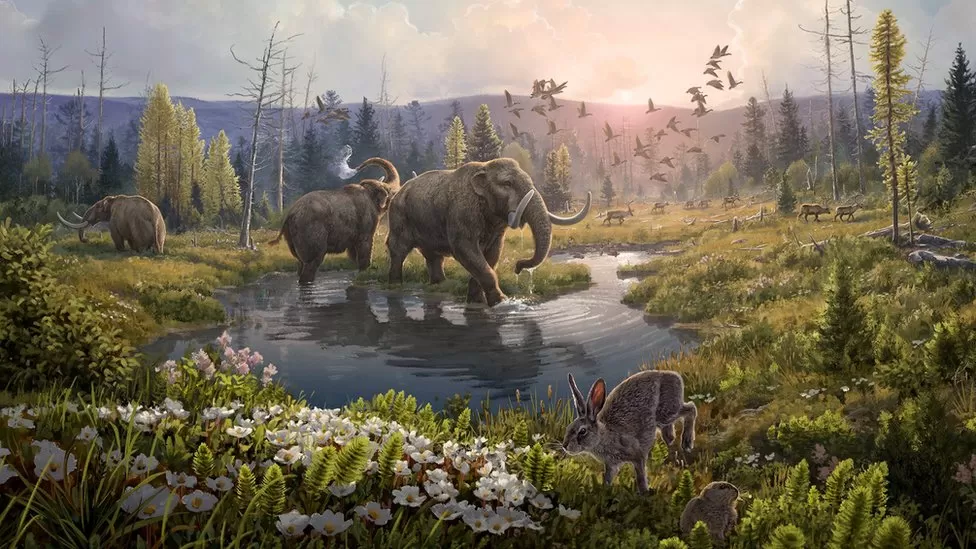Ancient DNA reveals undiscovered ecosystem in the Arctic
Researchers predict and discover the organisms that once inhabited the north of Greenland, image courtesy of BBC
February 13, 2023
Two million years ago, the arctic prominent to Greenland wouldn’t have looked any different than the polar plains in the far north and south, but new science has discovered that there could have been vast forests and a multitude of animals living within the flourishing ecosystem.
There were traces of different species and habitats, ranging from insects and marine species to vertebrates and rodents. Usual environments have an abundance of certain species and their descendants, all being easily compatible and able to carry on, but the ecosystem discovered in the arctic of Greenland expresses an entirely new type of community.
Unusual geographic features have been discovered in this arctic, including abnormal mineral-enriched surfaces. Soils everywhere have many minerals, allowing them to accumulate more DNA molecules over time. Minerals are proven to protect the DNA from degradation, that being the reason that the DNA has survived for this long. Rising temperatures in this arctic ecosystem have also helped this process along. The minerals happen to thrive in higher temperatures.
Fossils of organisms that someone wouldn’t normally discover in that ecosystem have been uncovered in this arctic area. Tree species such as the red cedar had been found, whereas today they’re normally dotted much farther south in places like Vancouver Island. Fragments of horseshoe crab DNA and green algae, supported by tropical and coastal climates, were discovered as well. This arctic had somehow once been a rich ecosystem with flourishing forests and food webs. Mixed vegetation of popular trees and a variety of shrubs and herbs!
DNA records also found remnants of reindeer, geese, and all of their present-day relatives. There was also an ancient and extinct species discovered that resembles the mix between an elephant and a mammoth. Those fossils had only ever been previously found in North America. There is an entire ocean between North America and Greenland, not to mention the far trek north to get up there.
This is all quite unusual because of the climate that arctics are subjected to. The ancient arctic climates are said to be nearly twenty degrees warmer than how they are today. That just makes these situations much more interesting. Why is there so much being discovered right now? What makes this ecosystem so different from the others? What does this tell scientists? How much out there is there still to discover? This discovery alone has opened up a realm of new possibilities, changing the way scientists view the ancient world. This ecosystem has no modern equivalent and has given us a view into a whole different climate reality.













